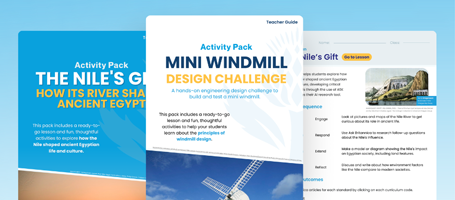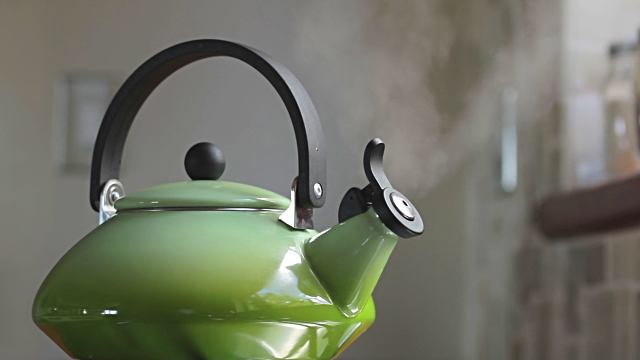Encourage your primary school students to think scientifically with this bite-sized introduction to the changing states of matter.
The following lessons are designed for primary students at all reading levels and use resources from Britannica School and other online sources. Contact your library staff to see if your institution already has access or claim your own Britannica School free trial.
Objectives
To understand that gases are formed when liquids evaporate and that when a gas is cooled it condenses to form a liquid.
To understand that gases move and flow more easily than liquids and in all directions.
To understand that gases differ from solids and liquids in that they do not maintain their shape and volume but spread out to fill the space they are in.
Materials and Resources
- Kettle and water for boiling
- Worksheet (↓ Download PDF)
- Assessment Sheet (↓ Download PDF)
- Access to computers and the Internet
Lesson Directions
- Watch the BBC video on The Behaviour of Particles.
- Using the video ideas, students then behave as a solid, then a liquid, then a gas, reinforcing the movement and amount of energy the particles have.
- Ask the students to think about boiling a kettle and what happens to the liquid. What do you see? Where does the gas go? Students brainstorm and illustrate their ideas on their Worksheet.
- Boil the kettle again but this time use a mirror or window to reflect the steam. (Note: students need to be seated at a distance to prevent scolding).
- Students observe the window and what happens when the steam cools down (Hint: it condenses and becomes a liquid again). Students add observations to their work sheet.
- In pairs and using computers, students play the Solids, Liquids and Gases game from Science Kids. (Note: You may need to click the screen to enable Flash Player.)
- After completing the game have students brainstorm on their worksheet a list of solids, liquids and gases.
- Explain that gases are often invisible. Ask the students to discuss and share their responses to the following questions:
- What shape does a gas have?
- How does it move? (Hint: Gases spread out when they move and do not retain their volume. They also take the shape of the container they are in, regardless of its size or shape.)
Assessment
- Using their Assessment Sheet, students are to draw particle pictures and label them with key facts about each state of matter.
- Ask students to observe the image of a kettle of water boiling on their Assessment Sheet. Can they explain scientifically what happens to the water?
Source:
BBC Gases, Liquids and Solids – Lesson Plan, 20 October 2014
Further Reading
Search for these differentiated resources on Britannica School to help advanced learners dive deeper into the topic.
Article: Matter – Britannica School
Video: Gases Have Mass – Britannica School
Interactive: States of Matter Model – Britannica School
More Educator Resources
Sign up with your email for more free resources from Britannica.
These activities and resources have been created using content from Britannica School, the go-to site for safe, comprehensive student research. Contact your librarian to find out if your institution already has access. Find out more about Britannica School or set up your own free trial.

